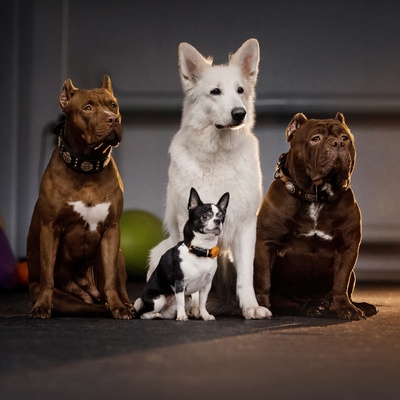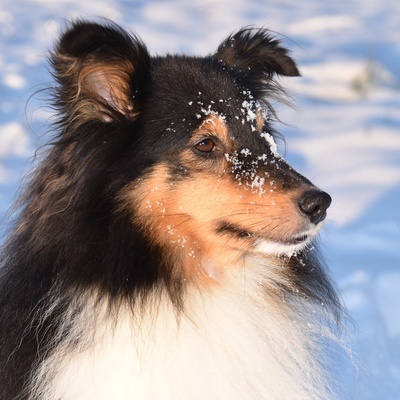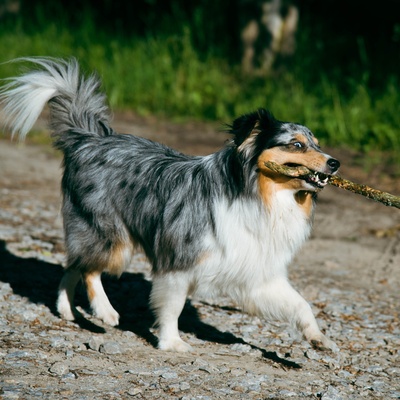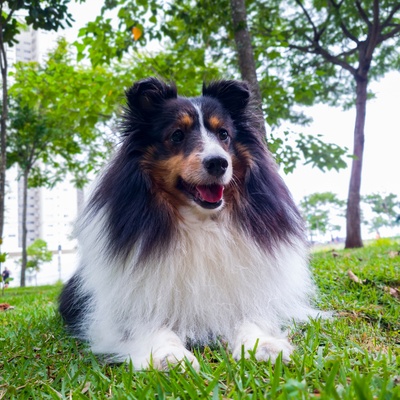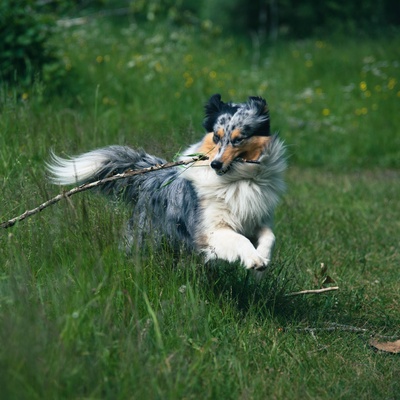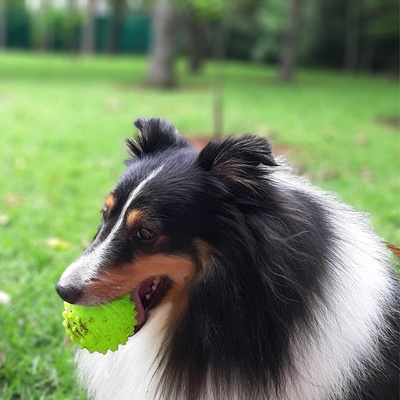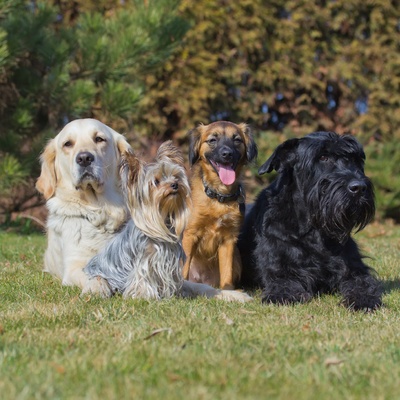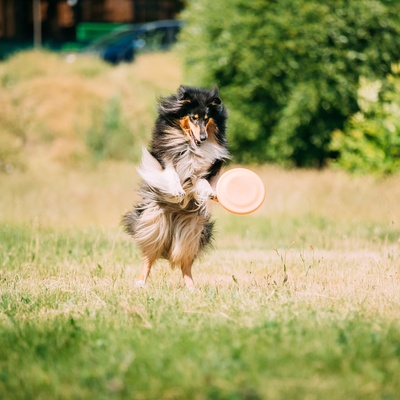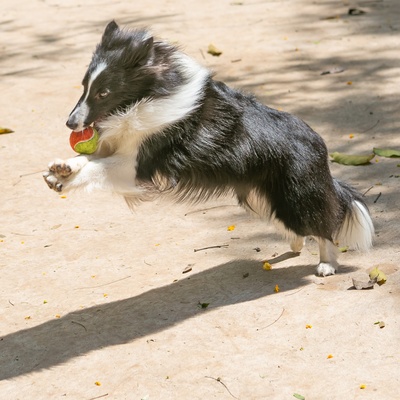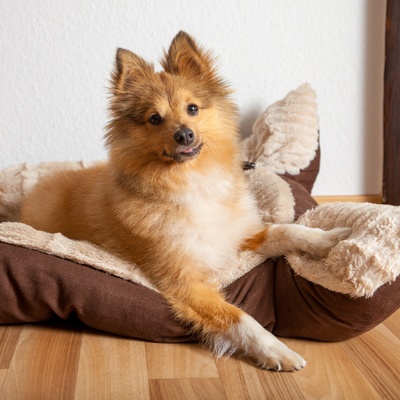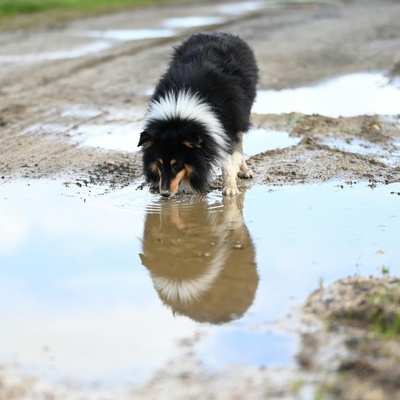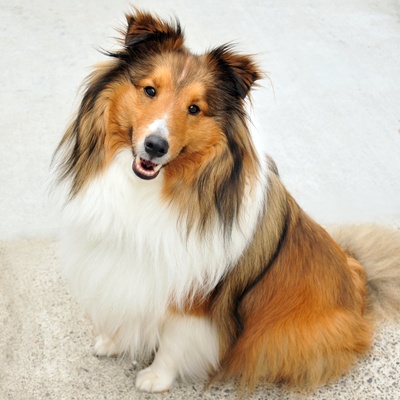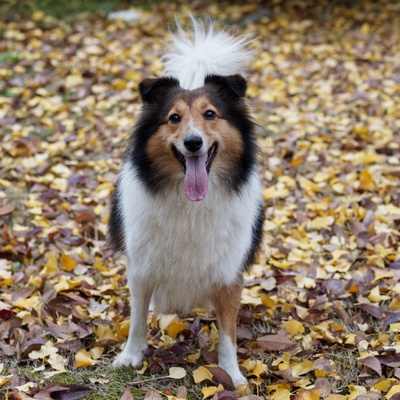Introducing the Shetland Sheepdog
Discover all there is to know about the Shetland Sheepdog : its characteristics, behavior, training, and its cost.
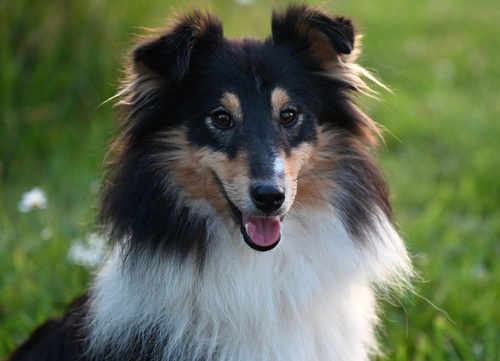
Discover all there is to know about the Shetland Sheepdog : its characteristics, behavior, training, and its cost.
The Shetland Sheepdog traces its roots to the Shetland Islands of Scotland, where it was originally bred as a herding dog. Over the centuries, this breed has earned a reputation for its intelligence, loyalty, and versatility. Today, Shelties are among the most beloved dog breeds worldwide due to their gentle temperament and strong work ethic.
Shelties are naturally affectionate and social, often expressing love through playful antics and close companionship. Whether playing with children or participating in obedience trials, Shetland Sheepdogs shine in every role they undertake, bringing joy and laughter to those fortunate enough to have them around.
This section outlines the unique features of the Shetland Sheepdog.
The Shetland Sheepdog belongs to the herding group (1), which also includes breeds like Border Collies and Australian Shepherds.
Shelties are a small to medium-sized breed, generally standing between 13 and 16 inches (33-41 cm) at the withers and weighing 15 to 25 pounds (7-11 kg).
The Sheltie has a double-layered coat that is long and thick. The outer coat is straight and harsh, while the undercoat is dense and soft, offering protection from harsh weather conditions.
The coat of the Shetland Sheepdog varies in color but is typically seen in sable, tricolor, and blue merle. White and tan markings can also be present on the chest, legs, and face.
Shelties adapt well to both urban and rural environments but thrive best in homes with secure yards where they can run and play.
Shelties are naturally friendly and sociable dogs. They bond well with families and are known for their compatibility with children and other pets.
The Sheltie is generally a healthy breed but can be predisposed to conditions like hip dysplasia, hypothyroidism, and eye diseases.
Shetland Sheepdogs are intelligent and eager to please, making them highly trainable. They respond best to positive reinforcement methods, and training with patience and kindness is crucial to nurturing their sensitive nature.
We can help!
Every dog has its own character, and so do you. Making the right choice will ensure his well-being and yours.
Take our quiz to find out which breed is right for you, based on your personality, lifestyle, location and many other criteria.
Don't wait any longer and take the quiz to find out the answer!
Shetland Sheepdogs are small, well-proportioned dogs renowned for their agility and striking appearance. They sport a luxurious double coat, often in shades of sable, tricolor, and blue merle, complemented by a distinctive expressive face featuring alert, almond-shaped eyes.
Shetland Sheepdogs are one of the smaller herding breeds. Females typically stand between 13 and 15 inches, while males are slightly taller, ranging from 14 to 16 inches. Regarding weight, females usually tip the scales at about 15 to 20 pounds, and males can weigh between 20 and 25 pounds.
Sheltie puppies grow rapidly within their first few months, doubling their weight from one to four months of age. By their first birthday, most Shelties will have reached their adult size and weight.
The Shetland Sheepdog sports a lush, double-layered coat. The outer coat is long, straight, and harsh, with elegant fringes on the chest, legs, and tail. This layer provides protection against harsh weather conditions. The undercoat is dense and soft, offering warmth and insulation.
Shelties have a rich color palette, ranging from sable (light to deep golden-brown), tricolor (black, white, and tan), and blue merle (gray with black patches and tan highlights). White markings on the collar, chest, and legs are common across all color patterns.
Maintaining a Sheltie's coat requires consistent grooming. They shed moderately throughout the year, with increased shedding periods in spring and autumn. Daily brushing is recommended during these times to manage shedding and prevent matting.
The coat is largely self-cleaning, but a bath every few months will keep it shiny and clean. Regular grooming ensures your Sheltie stays comfortable and healthy.
The Shetland Sheepdog is a well-proportioned and balanced dog. Its head is wedge-shaped, with a flat skull and a graceful taper toward the muzzle. The eyes are almond-shaped and dark brown, except in blue merles, which often have blue or marbled eyes.
The ears are small and positioned high on the head, naturally folding forward at the tips. The Sheltie's body is compact and muscular, with a deep chest and a slightly arched loin. The tail is long, carried low, and features a profuse, feathery plume.
Shetland Sheepdogs are exceptionally loyal, affectionate, and protective. They have an innate herding instinct, making them alert and attentive companions.
There are currently over 400 recognized dog breeds, grouped into 10 categories based on their common traits. The Shetland Sheepdog belongs to Group 1, which includes herding breeds like Border Collies, Australian Shepherds, and German Shepherds. This group is known for their intelligence, agility, and strong herding instincts, which make them ideal for working with livestock.
Shetland Sheepdogs exemplify these characteristics, displaying remarkable intelligence, devotion, and a gentle, friendly nature. Their primary role is as a herding dog, but they also excel in canine sports and make loving family pets.
Shetland Sheepdogs are renowned for their keen intelligence and agreeable nature, making them exceptionally easy to train and delightful to have around. These dogs are intensely affectionate and form deep bonds with their owners.
They thrive on attention and interaction, requiring an owner who is present and engaged to foster their emotional and mental well-being. While they do enjoy some independence, Shelties are happiest when part of family activities.
Take the test and find out the dog breed that matches your personality and lifestyle.
Shetland Sheepdogs are epitomes of sociability and kindness. They are naturally good with humans, including strangers, due to their friendly demeanor. Shelties are excellent companions for children, known for their patience and gentle play. They also generally get along well with other dogs and pets, especially when socialization begins early.
Encouraging social interactions from puppyhood ensures a well-rounded and confident adult dog, capable of navigating various social situations with ease.
Shetland Sheepdogs are highly adaptable and can thrive in different environments, whether it's an apartment or a house, in urban or rural settings. These affectionate dogs require consistent attention and love from their owners, and they will happily follow them wherever they go. Daily walks are crucial to their well-being, and it's recommended to give them at least two walks a day, each lasting around 30 minutes.
Despite their adaptable nature, Shetland Sheepdogs have a strong need to explore and expend energy freely. An outdoor space where they can satisfy their natural curiosity is ideal for their physical and mental stimulation. Their intelligence and herding instincts mean they excel in activities like running, playing, and agility training. Providing them with varied activities ensures that these clever dogs stay happy and well-balanced.
The Shetland Sheepdog, known for its superior intelligence, is a highly trainable breed that learns commands quickly. Their eagerness to please and natural curiosity make them responsive to positive reinforcement and reward-based training methods.
However, because of their agility and sometimes independent nature, it's advisable to equip them with a GPS collar to prevent any escapes during outdoor activities.
Shetland Sheepdogs possess strong listening skills and a keen willingness to follow commands. They thrive in structured training programs where they receive consistent guidance and rewards. This makes them well-suited for various tasks beyond herding, including agility, obedience, and even therapy work.
Their loyalty, intelligence, and gentle temperament ensure that, with proper training, these dogs are highly obedient and devoted companions.
The Shetland Sheepdog is generally a healthy and robust breed. Providing daily care, including regular grooming and check-ups, is crucial to prevent diseases and infections and keep them in their best shape.
Shetland Sheepdogs are typically healthy dogs with an average lifespan of 12 to 14 years. Despite their overall vitality, they can be predisposed to certain genetic health issues. Common concerns include hip dysplasia, epilepsy, progressive retinal atrophy (PRA), and von Willebrand disease. PRA leads to gradual vision loss, while von Willebrand disease affects blood clotting.
Regular screening and genetic testing can help identify these conditions early and prevent their progression.
Routine veterinary care is essential to ensure your Shetland Sheepdog remains healthy. Regular vaccinations, deworming, and parasite treatments should be administered according to your vet's advice. Additionally, daily brushing is necessary to prevent matting and tangles in their long double coat.
Regular ear cleaning will help reduce the risk of infections, especially since they have upright ears. Brush their teeth two to three times a week to prevent tartar buildup, and trim their nails monthly to prevent overgrowth and injury.
Lastly, while Shetland Sheepdogs are not hypoallergenic, early awareness of any allergies and consulting with a vet will ensure the appropriate care is provided.
Shetland Sheepdogs, like all breeds, require a balanced diet tailored to their specific nutritional needs to maintain their energy and vitality. Protein and vitamins are essential components of their diet to ensure strong muscles and overall health. Premium-quality kibble designed for small to medium-sized breeds can provide the necessary balanced nutrition.
If additional protein is needed due to heightened activity levels, consider supplementing their diet with lean white or red meat, like chicken or beef, in moderation. This should be done while limiting fat intake to keep their weight in check. Shetland Sheepdogs are energetic and active, so ensuring proper portion control and regular feeding times is vital to prevent overeating and potential health issues like obesity.
The Shetland Sheepdog, or "Sheltie," is a well-regarded breed known for its intelligence and agility. It's important to consider several factors before adopting, including the reputation of the breeder, the dog's health, and its living conditions.
Before adopting a Shetland Sheepdog, it's crucial to take several considerations into account. Ensure that the breeder is reputable by visiting their facilities to observe the living conditions and behavior of the dogs. Confirm the health of both the puppy and its parents, and ask the breeder for transparent information about any genetic illnesses or conditions in the lineage.
Lastly, you must have your dog microchipped by the age of 8 weeks old and have their details registered on a relevant database like Petlog or Animal Tracker. This is a legal requirement in Great Britain, and non-compliance could result in a
fine. For microchipping, consult your veterinarian. Alternatively, any Blue Cross center will offer this service free of charge.
The cost of acquiring a Shetland Sheepdog varies due to factors such as lineage, pedigree, breeder reputation, and age. Expect to pay anywhere from
to
for a Sheltie puppy from a reputable breeder.
Annual maintenance, including veterinary fees and food, generally ranges between
and
.
Choosing a dog that matches your personality and lifestyle will ensure your well-being and his!
To access the most relevant information, suitable payment methods, and delivery in your region, please select the website corresponding to your country.

